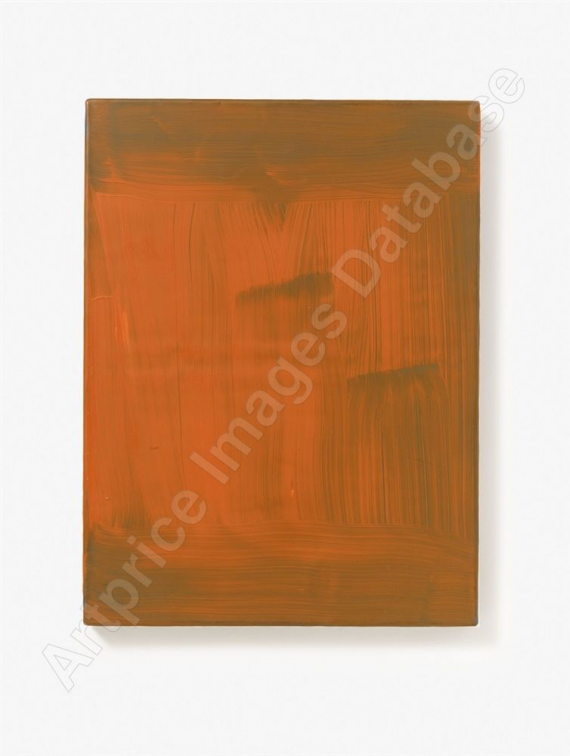Ohne Titel. 1998.
Acrylic on lead and panel.
Signed, dated and numbered on the reverse. From an edition of 20 copies, each of which is of unique charachter owing to the manual application of the colors. 40.5 x 30 cm (15.9 x 11.8 in).
[EH].
• Characteristic painting on lead.
• Sophisticated monochromy inivigorated by an expressive brushwork.
• In 2014, the Museum Brandhorst in Munich presented the first posthumous retrospective of the artist's work, followed by retrospectives at the Stedelijk Museum, Amsterdam, and the Dallas Museum of Art in 2018 and 2023, respectively, as well as a major exhibition at the Long Museum in Shanghai.
PROVENANCE: Galerie Holtmann, Cologne.
Private collection North Rhine-Westphalia (acquired from the above in 2004).
In good condition.With a subtle superficial rubbing (presumably from the making) lower right.
Acrylic on lead and panel.
Signed, dated and numbered on the reverse. From an edition of 20 copies, each of which is of unique charachter owing to the manual application of the colors. 40.5 x 30 cm (15.9 x 11.8 in).
[EH].
• Characteristic painting on lead.
• Sophisticated monochromy inivigorated by an expressive brushwork.
• In 2014, the Museum Brandhorst in Munich presented the first posthumous retrospective of the artist's work, followed by retrospectives at the Stedelijk Museum, Amsterdam, and the Dallas Museum of Art in 2018 and 2023, respectively, as well as a major exhibition at the Long Museum in Shanghai.
PROVENANCE: Galerie Holtmann, Cologne.
Private collection North Rhine-Westphalia (acquired from the above in 2004).
In good condition.With a subtle superficial rubbing (presumably from the making) lower right.
15
Günther Förg
Ohne Titel, 1998.
Acrylic
Starting bid: € 7,600 / $ 8,968
Headquarters
Joseph-Wild-Str. 18
81829 Munich
Phone: +49 89 55 244-0
Fax: +49 89 55 244-177
info@kettererkunst.de
Louisa von Saucken / Undine Schleifer
Holstenwall 5
20355 Hamburg
Phone: +49 40 37 49 61-0
Fax: +49 40 37 49 61-66
infohamburg@kettererkunst.de
Dr. Simone Wiechers / Nane Schlage
Fasanenstr. 70
10719 Berlin
Phone: +49 30 88 67 53-63
Fax: +49 30 88 67 56-43
infoberlin@kettererkunst.de
Cordula Lichtenberg
Gertrudenstraße 24-28
50667 Cologne
Phone: +49 221 510 908-15
infokoeln@kettererkunst.de
Hessen
Rhineland-Palatinate
Miriam Heß
Phone: +49 62 21 58 80-038
Fax: +49 62 21 58 80-595
infoheidelberg@kettererkunst.de
We will inform you in time.




 Lot 15
Lot 15 


